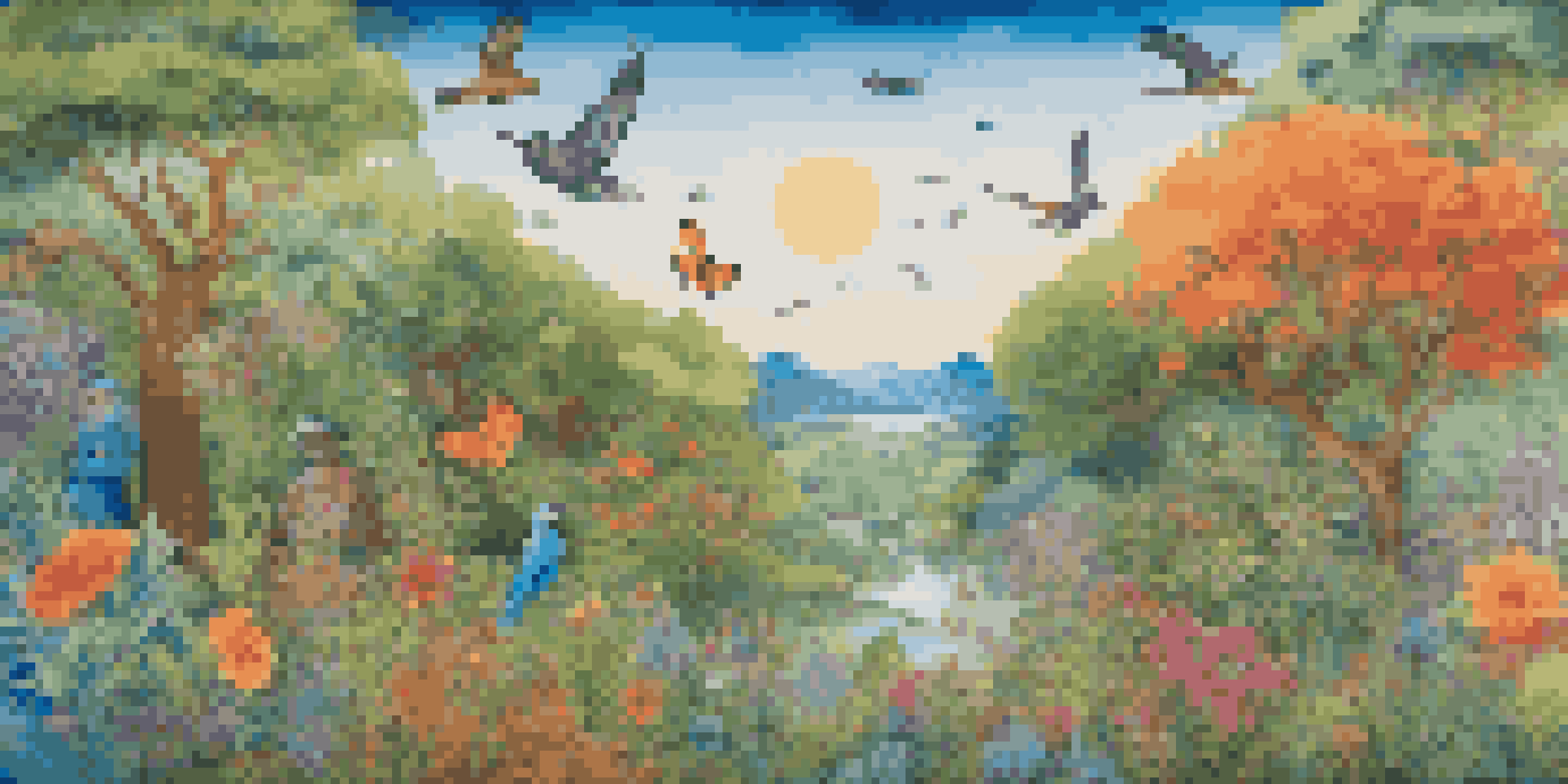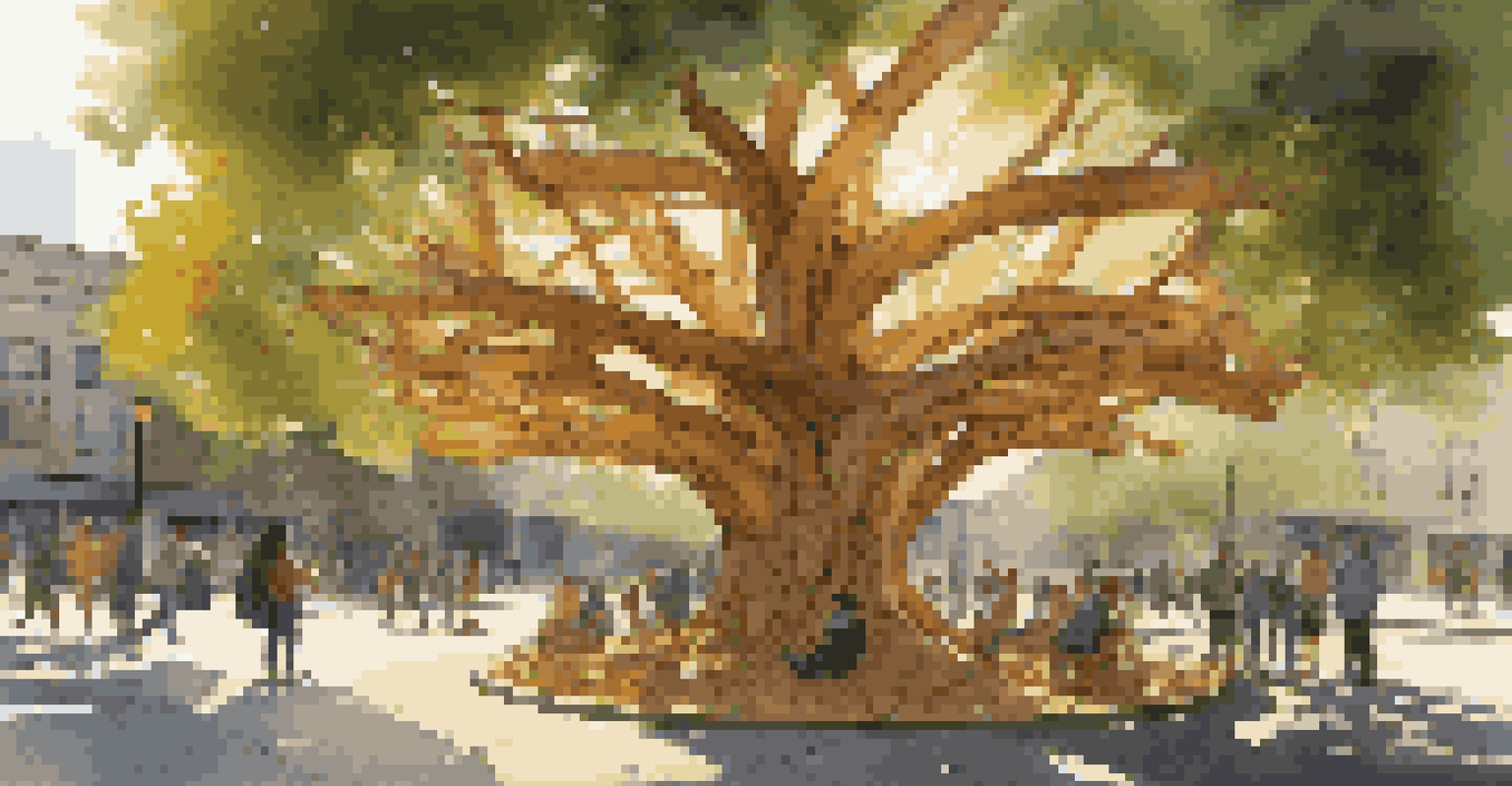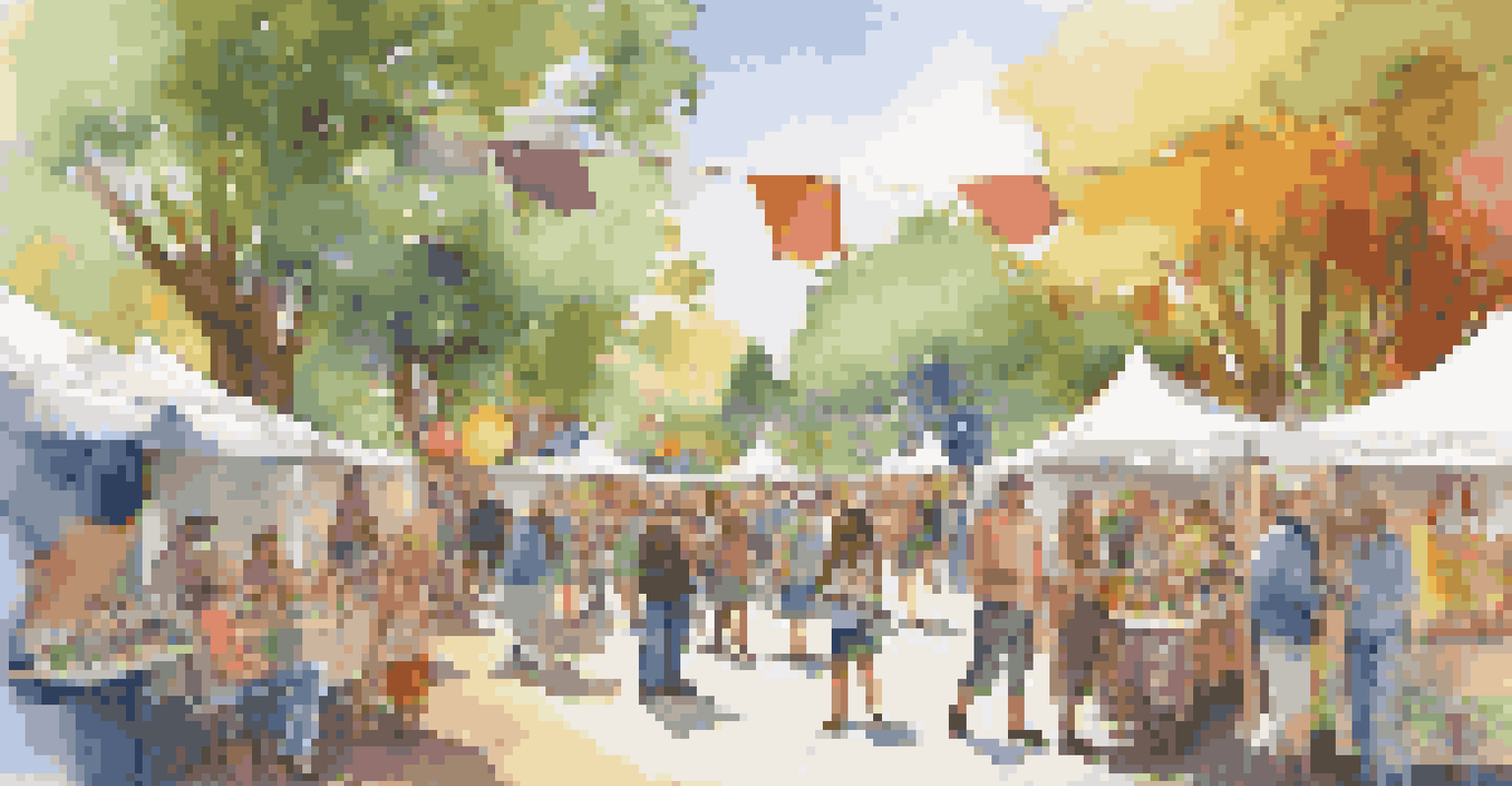Art as a Catalyst for Community Environmental Change

Understanding Art's Role in Environmental Activism
Art has long been a medium for expression, but its role in environmental activism is increasingly recognized. It serves as a powerful tool to raise awareness about ecological issues, making complex topics more accessible and relatable. By transforming environmental concerns into visual narratives, artists can evoke emotions and prompt action within their communities.
Art is not a mirror to reflect reality, but a hammer with which to shape it.
For instance, murals depicting endangered species or climate change can catch the eye of passersby, sparking conversations that might not happen otherwise. This visual storytelling often resonates deeply, bridging the gap between art and activism. By engaging the public through art, communities can cultivate a shared sense of responsibility towards environmental stewardship.
Moreover, art encourages creativity in problem-solving, inspiring innovative approaches to local environmental challenges. When communities come together to create, they foster a collective identity that can drive sustainable change. In this way, art becomes a catalyst, igniting passion and motivating individuals to participate in environmental initiatives.
Community Murals: Painting a Greener Future
Community murals are a striking example of how art can catalyze environmental change. These large-scale artworks often highlight local ecological issues, such as pollution, deforestation, or habitat loss. By involving community members in the creation process, murals not only beautify public spaces but also instill a sense of ownership and pride in local environmental efforts.

For example, in cities like Philadelphia, mural projects have transformed barren walls into vibrant displays that celebrate nature and advocate for conservation. These murals serve as constant reminders of the community's commitment to protecting the environment. They draw attention to issues that might otherwise be overlooked, encouraging ongoing dialogue about local sustainability practices.
Art Inspires Environmental Action
Art serves as a powerful medium to raise awareness about ecological issues, transforming complex topics into relatable visual narratives that prompt community engagement.
Additionally, community murals can attract visitors, increasing foot traffic and economic opportunities. As neighborhoods become known for their artistic expressions, they can also become hubs for environmental education and activism. This blend of art and community engagement fosters a culture of care for the environment, igniting a movement towards a greener future.
The Impact of Public Art Installations on Awareness
Public art installations play a significant role in raising awareness about environmental issues. These artworks, often positioned in high-traffic areas, challenge viewers to confront pressing ecological concerns in thought-provoking ways. By making environmental issues visible, public art can shift perceptions and inspire action.
The greatest threat to our planet is the belief that someone else will save it.
For instance, installations made from recycled materials can highlight the importance of waste reduction and recycling. When people see art constructed from items they might consider trash, it can prompt reflections on their own consumption habits. This connection between art and sustainability encourages a mindset shift where individuals begin to consider their role in the larger environmental picture.
Moreover, public art can serve as a rallying point for community gatherings and educational events. By creating a space for dialogue and collaboration, these installations can foster a sense of community among those passionate about environmental advocacy. In this way, public art can become a vital part of the movement towards a more sustainable future.
Art Festivals: Bringing Communities Together for Change
Art festivals dedicated to environmental themes can unite communities around a common cause. These events often showcase local artists whose work reflects ecological concerns, creating a vibrant platform for education and engagement. By celebrating art and its connection to the environment, festivals can inspire attendees to take action in their own lives.
For example, festivals that feature workshops, talks, and interactive installations encourage participants to explore eco-friendly practices. This hands-on approach demystifies concepts like sustainable living, making them more approachable. As attendees engage with artists and each other, they can share ideas and strategies for fostering environmental change in their own neighborhoods.
Community Murals Foster Ownership
By involving locals in creating community murals, these projects beautify spaces while instilling pride and responsibility towards environmental stewardship.
Additionally, these festivals can amplify community voices, allowing local advocates to share their stories and initiatives. By highlighting the intersection of art and activism, these events can spark collaborations that lead to impactful projects. The collective energy generated at art festivals can be a powerful motivator, driving home the message that together, communities can create meaningful change.
Art as a Medium for Environmental Education
Art can serve as an effective medium for environmental education, making complex scientific concepts more relatable. Through creative expressions, artists can distill intricate ideas into accessible formats, capturing the attention of diverse audiences. This approach not only informs but also inspires individuals to connect emotionally with environmental issues.
For instance, interactive art projects that allow participants to engage in hands-on learning can deepen understanding. When people actively participate in the creation of art, they are more likely to remember the lessons it imparts. This experiential learning fosters a sense of agency, empowering individuals to advocate for environmental change.
Furthermore, educational programs that incorporate art can reach a wider audience, including children and those less inclined toward traditional educational methods. By blending creativity with environmental stewardship, we can cultivate a generation that values and protects the planet. In this way, art becomes a bridge between knowledge and action, nurturing a culture of environmental responsibility.
Collaborative Art Projects: Building Community and Awareness
Collaborative art projects are an excellent way to engage communities in environmental advocacy. These initiatives invite individuals from various backgrounds to contribute their creativity, fostering a sense of belonging and shared purpose. By working together on artistic endeavors, participants can bond over their common interest in protecting the environment.
For example, community gardens that incorporate artistic elements, such as sculptures or murals, can enhance the space while promoting ecological awareness. These projects not only beautify the environment but also provide educational opportunities about local flora and fauna. As community members collaborate, they cultivate a deeper appreciation for their natural surroundings.
Art Festivals Unite for Change
Environmental-themed art festivals create vibrant platforms for education and collaboration, inspiring attendees to adopt eco-friendly practices and advocate for sustainability.
Moreover, collaborative art projects can create lasting legacies that inspire future generations. The involvement of diverse voices ensures that various perspectives are represented, enriching the narrative around environmental issues. This collective effort not only strengthens community ties but also amplifies the call for action, demonstrating that together, communities can make a real difference.
The Future of Art in Environmental Activism
Looking ahead, the role of art in environmental activism is poised to grow even more significant. As climate change and ecological degradation become increasingly urgent issues, artists will continue to use their platforms to advocate for change. The fusion of technology and art, such as virtual reality experiences or digital installations, will further expand the reach and impact of environmental messaging.
Moreover, as more artists engage with environmental themes, we can expect a richer diversity of perspectives and ideas. This evolution will enhance the dialogue surrounding sustainability, allowing for innovative solutions to emerge. By fostering collaboration between artists, scientists, and activists, we can create a more holistic approach to addressing environmental challenges.

Ultimately, the future of art as a catalyst for community environmental change is bright. By harnessing the power of creativity, communities can inspire action and cultivate a culture of sustainability. As we embrace this potential, art will undoubtedly continue to play a vital role in shaping a healthier, more equitable planet.